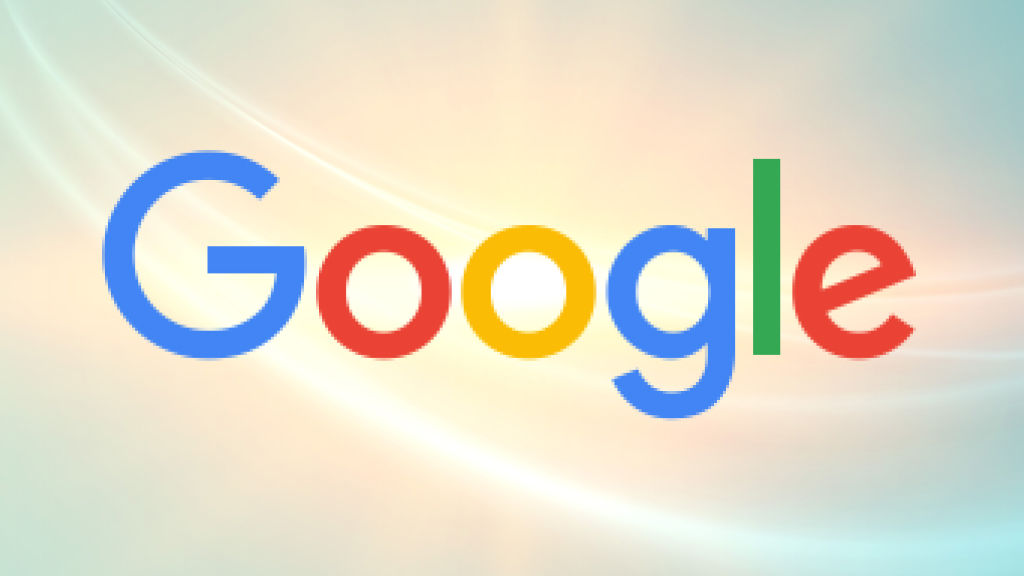
In the cutthroat world of Silicon Valley, few stories capture the essence of missed opportunity quite like Yahoo’s fateful decision in 1998.
When two Stanford graduate students, Larry Page and Sergey Brin, approached Yahoo with their revolutionary search engine technology, they weren’t just offering a product—they were offering a glimpse into the future of the internet. But Yahoo, then the undisputed king of the digital realm, saw only a simple search algorithm where they should have seen an empire in the making.
This decision would prove to be more than just a footnote in tech history; it became perhaps the most expensive business blunder of all time. The story of how Yahoo dismissed Google, only to watch it grow into a trillion-dollar behemoth that would eventually orchestrate its downfall, serves as a stark reminder of how even the mightiest tech giants can fall victim to their own hubris and myopic vision of innovation.
The Birth of Google

When Larry Page and Sergey Brin launched Google in 1998, Yahoo was already a dominant internet player. However, Yahoo’s search engine was based on a directory model, requiring users to navigate through categories to find information. This approach was difficult and inefficient as the internet expanded.
Page and Brin’s innovation lay in their PageRank algorithm, which ranked websites based on the number and quality of links pointing to them. This method produced far more relevant search results than Yahoo’s directory-based system or other search engines of the time.
During its early days, Google approached Yahoo with an offer to sell their fledgling search engine for $1 million. Yahoo declined the offer, believing that search was not central to its long-term strategy.
Yahoo’s decision-makers underestimated the potential of search as a transformative technology. They viewed search as a utility rather than a revenue-driving service, which aligned with their strategy to keep users on their platform rather than directing them to other websites.
Later, after Google had started gaining significant traction, Yahoo reconsidered and offered to buy Google for $3 billion. By then, Google had recognized the value of its search engine and advertising platform, and declined Yahoo’s offer. As Yahoo struggled to keep up, it made the strategic decision to outsource its search functionality to Google.
How Yahoo Boosted Google’s Growth with Free Advertising

The partnership between Yahoo and Google turned out to be one of the most significant and unintended acts of free advertising in the history of the internet. Yahoo’s decision to integrate Google’s search engine technology into its platform was not just a technical decision; it was one driven by necessity.
Yahoo outsourcing its search technology to Google meant that Yahoo would use Google’s search results on its platform, but it would keep its own branding, creating a seamless experience for users who relied on Yahoo for various online services.
This move may have seemed practical at the time, as Yahoo could focus on other areas of its business like news, finance, email, and advertising, without having to reinvent the search wheel. However, by integrating Google’s search engine, Yahoo inadvertently boosted Google’s growth in a way that would have significant long-term consequences for both companies.
Over time, Yahoo’s reliance on Google’s search technology contributed to the erosion of its own search business, leading to a significant loss of market share. By 2004, Yahoo’s decision to integrate Google’s search engine began to work against the company. Google was no longer just a search engine on Yahoo’s platform. It had grown into a search giant with its own strong brand identity. Users began directly visiting Google’s website.
This shift in user behavior had a significant impact on Yahoo’s search business, as its own search technology was no longer being used. While Yahoo was still offering a wide array of services, its inability to offer competitive search results meant that it lost out on search traffic.
Key Factors That Led to the Downfall of Yahoo

-
Approach to Monetization
One of the key differences between Yahoo and Google was their approach to monetization. Yahoo relied heavily on banner ads and display advertising, which cluttered its homepage and compromised the user experience.
In contrast, Google pioneered text-based ads through its AdWords platform, integrating them seamlessly with search results. This approach not only generated higher revenue but also maintained a clean and user-friendly interface.
Google’s focus on relevance and user experience in advertising gave it a significant edge over Yahoo. By 2004, Google’s advertising revenue surpassed Yahoo’s, solidifying its position as the dominant force in digital advertising.
-
Innovation
Google continually innovated, while Yahoo stagnated. Page and Brin’s philosophy of creating products that “make the world’s information universally accessible and useful” led to the development of groundbreaking services like Gmail, Google Maps, and Google Drive. Each of these products became indispensable tools for users, further embedding Google into their daily lives.
Yahoo, on the other hand, struggled to innovate. Its attempts to expand into new areas, such as Yahoo 360° and Yahoo Screen, were either poorly executed or failed to resonate with users. This inability to adapt to changing market trends left Yahoo vulnerable to competitors like Google.
-
Data-Driven Decision Making
Another area where Google outpaced Yahoo was their reliance on data-driven decision-making. Google’s culture emphasized using data and analytics to improve its products and services continuously. This approach enabled Google to iterate quickly and stay ahead of the competition.
Yahoo, in contrast, was often bogged down by internal politics and a lack of focus. Its decisions were frequently driven by short-term goals rather than a long-term vision. This lack of strategic clarity hindered Yahoo’s ability to compete effectively with Google.
-
Mobile Revolution
As the internet transitioned to mobile devices, Google was quick to adapt. The launch of the Android operating system in 2008 positioned Google as a leader in the mobile ecosystem. Android’s open-source nature allowed it to dominate the smartphone market, providing Google with a massive user base for its search engine and other services.
Yahoo, on the other hand, was slow to embrace mobile. Its attempts to enter the mobile space were fragmented and lacked a cohesive strategy. By the time Yahoo began focusing on mobile, Google had already established itself as the default choice for mobile users.
-
Acquisitions
Google’s acquisition strategy also played a crucial role in Google’s success. Google’s purchase of YouTube in 2006, for example, positioned the company as a leader in online video. Similarly, its acquisition of DoubleClick strengthened its advertising capabilities.
In contrast, Yahoo’s acquisitions often failed to deliver value. Its $1.1 billion purchase of Tumblr in 2013 and $5.7 billion acquisition of Broadcast.com in 1999 are prime examples of deals that did not yield the expected returns. Poor integration and a lack of strategic vision plagued Yahoo’s acquisition strategy, further eroding its competitive edge.
-
Google Gained Advertisers
Another way that Yahoo boosted Google’s growth was through its adoption of Google’s advertising platform, AdSense, which allowed Google to monetize the search traffic coming through Yahoo. As Google’s search results appeared on Yahoo, Google also benefited from a surge in ad impressions, as Yahoo’s traffic drove more clicks to Google’s ads.
This not only helped Google generate revenue but also exposed advertisers to Google’s ad platform, which had rapidly become one of the most effective ways to target users based on their search queries. For advertisers, Google’s AdSense platform was an attractive way to reach an audience that was actively searching for specific information.
By running ads on Google’s search results, which were being displayed on Yahoo’s platform, advertisers saw increased engagement and better targeting. Yahoo, by essentially allowing Google’s search engine to power its own site, was also helping to populate Google’s ad network.
-
Introduction of AdWords
Google’s introduction of AdWords marked a revolutionary shift in online advertising, setting it apart from Yahoo. This innovative platform became a cornerstone of Google’s success and highlighted Yahoo’s inability to adapt quickly to the changing dynamics of the digital economy.
AdWords was built on a pay-per-click (PPC) model, where advertisers bid on keywords to display their ads alongside search results. This system allowed businesses to target specific audiences effectively, paying only when users clicked on their ads.
The platform also provided detailed analytics, empowering advertisers to measure and refine their campaigns in real time. This level of precision and cost-efficiency attracted businesses of all sizes, from small startups to global enterprises, creating a lucrative revenue stream for Google.
Yahoo, on the other hand, initially focused on display advertising, relying heavily on banner ads and sponsored placements. While these methods were effective in the early days of the internet, they lacked the targeting and scalability of Google’s PPC model.
Yahoo did attempt to enter the search advertising market by acquiring Overture Services in 2003, a company that pioneered PPC advertising. However, by then, Google had already solidified its dominance with AdWords, making it difficult for Yahoo to catch up.
Google’s foresight in launching AdWords went beyond technology, as it reflected a deep understanding of the shift toward intent-based marketing. Advertisers could now reach users at the exact moment they were searching for products or services, ensuring higher engagement and conversion rates.
Google’s ability to outpace Yahoo was rooted in their unwavering focus on innovation, user experience, and long-term vision. While Yahoo rested on its early successes, Google relentlessly pursued excellence, redefining the internet and setting new standards for the tech industry. The story of Google’s rise and Yahoo’s decline serves as a powerful reminder of the importance of adaptability, strategic thinking, and a commitment to delivering value to users.
Yahoo’s partnership with Google serves as a cautionary tale for companies considering outsourcing critical technologies. While outsourcing can offer short-term benefits such as cost savings and access to specialized expertise, it comes with significant risks, particularly in competitive industries.
Why Yahoo’s Acquisitions Failed

The common thread in Yahoo’s failed acquisitions is a lack of strategic vision and execution. The company often overpaid for assets without a clear plan to integrate or grow them. Additionally, Yahoo struggled to adapt to shifting market dynamics, frequently losing ground to more agile competitors. Yahoo’s acquisition missteps offer valuable lessons for contemporary companies:
- Strategic Vision Matters
Acquisitions should align with a company’s long-term goals and core competencies.
- Integration is Key
Effective integration ensures that acquisitions contribute meaningfully to the company’s success.
- Adapt and Innovate
Staying ahead of market trends is essential to avoid obsolescence.
- Monetization Strategies
Acquisitions should have a clear and viable path to profitability.
Yahoo’s Deal With Microsoft

In 2009, Yahoo and Microsoft entered a strategic partnership in a bid to challenge Google’s dominance in the search engine market. Under the agreement, Microsoft’s Bing would power Yahoo’s search engine, combining their resources and technologies to create a stronger competitor to Google.
This 10-year deal, known as the “Search Alliance,” represented a significant shift for Yahoo, which had long relied on its own search technology or outsourced arrangements like its earlier partnership with Google.
The partnership was designed to benefit both companies. For Microsoft, the deal provided access to Yahoo’s substantial user base and an opportunity to expand Bing’s reach. Yahoo, on the other hand, could offload the costly development and maintenance of search technology while focusing on its core strengths in content, advertising, and user engagement. As part of the agreement, Microsoft gained exclusive access to Yahoo’s search queries, while Yahoo retained control of ad sales for both companies’ premium advertising spaces.
Despite the ambitious goals, the deal faced several challenges. Yahoo’s branding remained prominent on its search pages, but the back-end technology was fully powered by Bing, which diluted Yahoo’s identity as a search provider. The arrangement also failed to make a significant dent in Google’s market share, as users continued to gravitate toward Google’s superior search capabilities and extensive ecosystem.
While the partnership offered short-term operational relief for Yahoo, it underscored the company’s retreat from its search ambitions. By outsourcing this critical function, Yahoo lost a key area of innovation and differentiation, further weakening its competitive position in the evolving internet landscape.
Ultimately, the Yahoo-Microsoft deal reflected the challenges of competing with Google’s entrenched dominance. While it provided Microsoft with a foothold in the search market, it highlighted Yahoo’s strategic missteps and reliance on external solutions rather than building its own cutting-edge technology.
The Sale of Yahoo to Verizon

In 2017, Verizon Communications finalized its acquisition of Yahoo’s core business for $4.48 billion, marking the end of an era for one of the internet’s pioneering companies. Yahoo, once a dominant force in online search, email, and digital media, had struggled in the face of intense competition from tech giants like Google. The sale reflected Yahoo’s gradual decline after years of mismanagement, missed opportunities, and an inability to adapt to the rapidly changing digital landscape.
Additionally, high-profile data breaches, including one affecting over 3 billion user accounts, tarnished Yahoo’s reputation and contributed to its declining value. Under the deal, Verizon acquired Yahoo’s core internet assets, including its email services, news, finance, and sports platforms, as well as its digital advertising tools.
From Lessons to Action: Building Tomorrow’s Success

As we reflect on Yahoo’s billion-dollar blunder, the lesson for modern businesses couldn’t be clearer — innovation waits for no one. At Smart Sight Innovations, we understand that today’s revolutionary idea shouldn’t end up as tomorrow’s missed opportunity.
Our expertise and experience transforms concepts into market-ready solutions in record time, with none of the hesitation that cost Yahoo its future.
Whether you’re a startup with a breakthrough algorithm or an established company exploring new horizons, our comprehensive suite of tools and formidable team ensure your vision doesn’t just remain an idea on a whiteboard.
With scalable infrastructure, robust security protocols, and flexible deployment options, we provide the foundation that turns “what if” into “what’s next.”
Don’t let your next big idea become someone else’s success story. Connect with Smart Sight Innovations today, and let us help you build, test, and launch your innovation with confidence. Because in today’s fast-paced digital landscape, the only mistake bigger than trying and failing is never trying at all.













